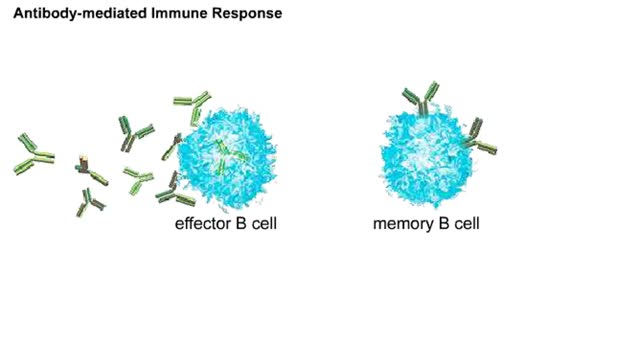Cell mediated immune response to a viral infection Animation
By: HWC
Date Uploaded: 06/09/2022
Tags: Cell mediated immune response to a viral infection Animation Intracellular pathogens macrophage enzymes cleave MHC complexes T cells antigen-MI-IC complexes interleukins cytotoxic T cells memory T cells antigen-MHC complexes perforins cytoplasm
Intracellular pathogens are the targets of cell-mediated immune response. The process begins when a virus infects a macrophage. Another macrophage engulfs the same virus or an antigen from it. In both cells, enzymes cleave the viral antigens into small bits. The fragments move to the cell surface, where they become bound to MHC complexes. T cells bind to the antigen-MI-IC complexes on the antigen-presenting cells. Binding of the helper T cells stimulates the antigen-presenting cells to secrete interleukins. This causes the helper T cells to produce different interleukins, which stimulate cytotoxic T cells to divide. The activated T cells divide and their descendants differentiate to form effector cytotoxic T cells and memory T cells. The memory T cells are stored as protection against future infections. Their targets are body cells infected by the same virus that triggered their production. Such body cells display antigen-MHC complexes on their surface. An effector cytotoxic T cell recognizes and binds to one such complex. The T cell secretes perforins and toxins onto the infected cell. which program it for death. The cytotoxic T cell disengages and heads off in search of other targets. The infected cell dies as its cytoplasm dribbles out and its DNA disassembles.
Add To
You must login to add videos to your playlists.
Advertisement












Comments
0 Comments total
Sign In to post comments.
No comments have been posted for this video yet.